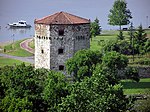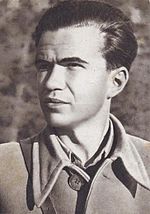Despot Stefan Tower

The Despot Stefan Tower (Serbian: Деспотова кула; Despotova kula) or Dizdar Tower (Диздарева кула; Dizdareva kula) is a structure in Belgrade, Serbia, built ca. 1405, a couple of years after the city became the capital of Serbian Despotate under Despot Stefan Lazarević. In May 1963, representatives of the city administration, Institute for the protection of the cultural monuments and members of the astronomical societies, agreed to adapt the Dizdar Tower into an observatory. Works began in May, instruments were to be installed by autumn, and the observatory was to become operational in October 1963.Today, the tower is the seat of the Astronomical Society Ruđer Bošković and houses its Popular Observatory. The Observatory has two instruments: refractor Zeiss (110/2200mm) and reflector Tall 200 K (200/2200mm), both of which are used mainly for observations at night. Four panoramic telescopes are also mounted on the tower, which can be used to observe the panorama of Belgrade.
Excerpt from the Wikipedia article Despot Stefan Tower (License: CC BY-SA 3.0, Authors, Images).Despot Stefan Tower
Мали Калемегдан, Belgrade Old Town (Stari Grad Urban Municipality)
Geographical coordinates (GPS) Address Nearby Places Show on map
Geographical coordinates (GPS)
| Latitude | Longitude |
|---|---|
| N 44.825277777778 ° | E 20.451111111111 ° |
Address
Црква Ружица
Мали Калемегдан
11000 Belgrade, Old Town (Stari Grad Urban Municipality)
Central Serbia, Serbia
Open on Google Maps











